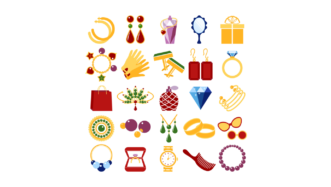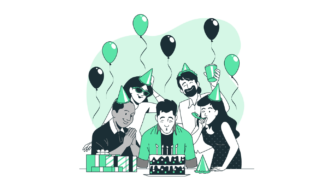LESSON OVERVIEW
This lesson plan deals with the grammatical structure of ‘used to’. Students will discover how to use the structure, go back to their school days and watch a video presenting what education looked like in the past and what it looks like now.
INTRODUCING AND PRACTISING USED TO
First, as a warm-up task, students discuss two questions about their school years. Next, they move to the grammar point. They have to read the sentences (all of them with ‘used to’) and answer the questions which will help them understand how the structure is used and built. To practise, in the next task they have to find and correct mistakes in the given sentences. In the last exercise on the structure, students change the sentences the second exercise so that they are true for them.
VIDEO AND DISCUSSION
Before watching the video, students get some vocab to learn. They need to read some questions and match the underlined words to their meanings. Then, they need to discuss these questions (e.g. in pairs). The video comprehension task is a true/false task. Students watch the video, do the task, change false sentences so that they are true. All of the sentences includes the structure of ‘used to’. Finally, students discuss changes in education in their countries.
PAIRWORK
To practise the structure in speaking, students need to talk about the past and the present. They get sets of images which should inspire them to discuss different aspects of life in the past and the present (such as technology, lifestyle, etc.). Obviously, they should use the structure of ‘used to’ where possible.
While we didn’t include this in the lesson, you could also ask students to compare some recent changes, e.g. life before and after the pandemic. If you don’t want it to be too dreadful, you can find some funny videos on YouTube showing life before and after COVID19.
WORKSHEETS
Subscribe to unlock these and many other Standalone lesson with the Premium plan
Subscribe













Hello, am I missing something or do we need to pay now in order to obtain most new content? Thanks!
Well, that’s true but it has worked like that for the past year so that’s not a new thing. Now, we usually publish 1 free lesson plan each month (pdfs) other 4-5 lessons for subscribers (pdf e-lesson plan). You can see all the free lesson plans at https://eslbrains.com/free-english-lesson-plans/
Oh, I’m sorry for that, the comment appeared in the wrong place and I misunderstood it apparently.
its a very short lesson I really had to pad it out for the 60 mins this is a 30-45 min lesson at maximum
Thank you for your feedback!
I see it may be true for some groups that are not talkative, but honestly, even just the last 4 slides take about 30 minutes with my students 🙂 Depends on how interested they are in reminiscing about the past I guess 😉
I love this idea, thanks!
Ahhh, and a helpful hint to make this more interesting…have students bring in pictures or memorabilia from their school days. My class really enjoyed it!
Thanks so much for sharing your idea with us 🙂
My adult students loved this lesson. The feedback was very positive. Thank you!
Great to hear that 🙂
That’s interesting!
great